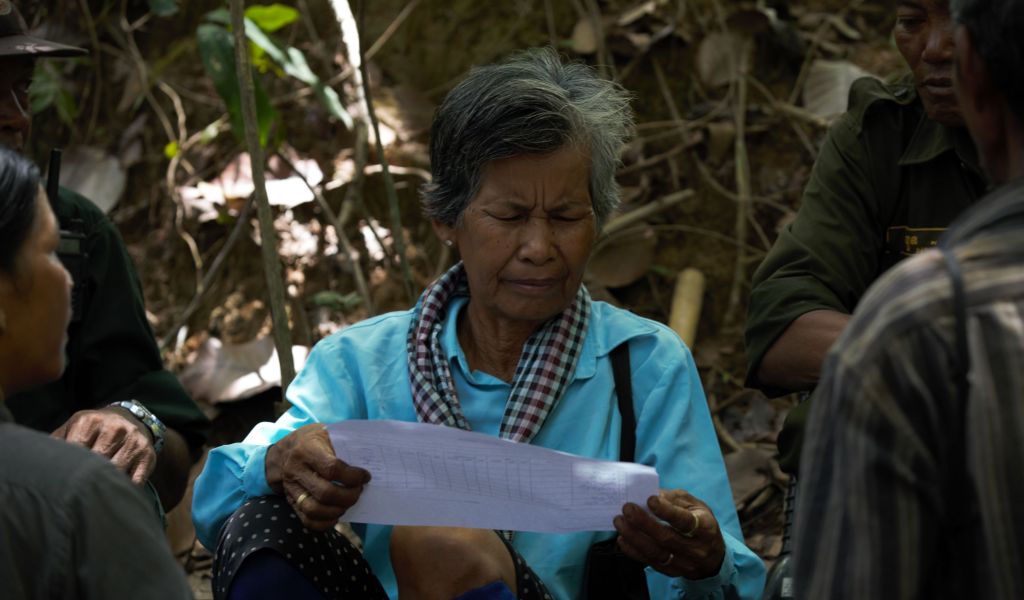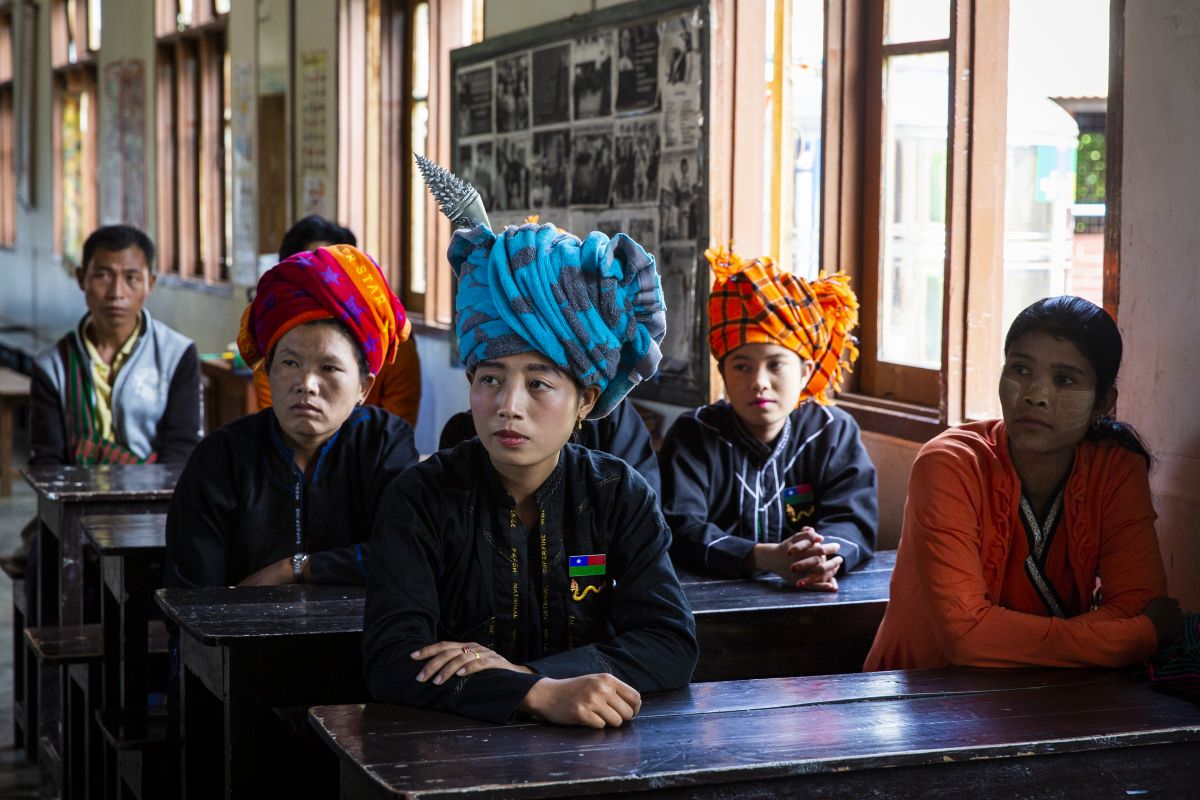Participatory action research ensures social forestry delivers results

Sustainable forest management in the Asia-Pacific region is an extremely complex, perennial challenge. Biological diversity, illegal logging, shifting cultivation, climate change, poverty and land tenure rights are just a few of issues that researchers and decision makers must tackle.
This complexity often results in failures that can have devastating economic, environmental and social impacts, including deforestation and forest degradation, increasing social inequalities and weakening of rights of forest communities.
Traditionally, researchers have addressed the challenges from the top down. Using this approach, ‘outside’ specialists plan, implement and evaluate development programs with little or no input from people in the communities that depend on forests for their livelihoods. Too often, this creates a disconnect between current professional practices and what is actually needed on the ground.
Participatory action research (PAR) takes a holistic approach by including local people in meaningful research every step of the way. Incorporating multiple perspectives and enabling critical reflection, PAR allows for context-specific results and leads to positive change. It usually involves a facilitator conducting research with local stakeholders to identify goals, make and carry out shared plans, and monitor and adjust actions to make progress toward those goals.
PAR has a pivotal role in social forestry
PAR’s role in developing social forestry is based on the recognition that local communities know the forest landscapes the best. They depend on these landscapes the most, have proven to be effective managers of these landscapes and have rights to these landscapes.
“The words in PAR say a lot about its meaning,” says Lok Mani Sapkota, a program officer at RECOFTC. “It is an approach of collective inquiry and experimentation that combines the knowledge and skills of researchers with those of local people, while empowering them all in the process.”
Using PAR methodology, forest-dependent local communities play a key role in the enquiry process. They work together with researchers to develop research questions, design the research process, understand the issues, and explore and test potential solutions. Those steps put a major focus on empowering the marginalized groups throughout the process and follow a cyclical process. Everyone learns from each round.
“PAR is an invaluable method for incorporating both local traditional knowledge and modern scientific knowledge into research processes,” says Sapkota.
A model for diverse disciplines
PAR has been defined differently by researchers from varied fields, from sociology and anthropology to community-based research and development. The PAR approach has been used in industry, education, social work, health, agriculture and forestry.
The concept was first put into practice by Kurt Lewin (1890–1947), a German-American psychologist known as one of the modern pioneers of social, organizational and applied psychology in the United States.
“In 1944, Lewin coined the term ‘action research’ based on the philosophy that people would be more motivated about their work if they were involved in the decision-making about how the workplace was run,” says Sapkota.
The philosophy and method of research seeks transformative change through the simultaneous process of taking action and doing research, which are linked together by critical reflection.
Sapkota explains that over the years, PAR evolved to include other applications.
“For example, Paulo Reglus Neves Freire, a Brazilian educator and philosopher (1921 – 1997), also emphasized critical reflection and empowerment of poor and marginalized members of society about issues pertaining to literacy, land reform analysis and the community. PAR got a strong push at a 1977 conference in Colombia and the Participatory Research Network was created in 1978.”
Creating a space for sharing traditional knowledge
Today, Sapkota says, PAR must play a significant role in the natural resource management sector, including social forestry.
“Forest-dependent people are one of the most vulnerable groups,” he says. “They face a number of interlinked challenges such as poverty, gender and social exclusion, unsustainable livelihoods, and limited access to natural resources and support systems. They are rich in traditional and customary knowledge and practices that are tested and refined over generations but are usually unnoticed in policymaking processes.”
Sapkota says that PAR can provide spaces where marginalized and vulnerable people can constructively participate in the policymaking process.

“They need the opportunity to learn the science behind their traditional knowledge and share it with researchers and decision-makers. They also need to increase their ability and capacity to engage with a variety of stakeholders, including local and national governments officials, to discuss issues and solutions.”
Mainstreaming PAR in university curricula and government agendas
PAR has proven successes in social forestry schemes. In RECOFTC’s work, for example, the women-led Bishnupur Community Forestry User Group in Nepal, worked closely with researchers to conduct a climate vulnerability analysis. They became aware of climate change-related issues and how those issues affect their lives. They learned what actions to take to reduce risk and which governmental and non-governmental agencies to approach for support for their climate adaptation efforts.
But despite documented results, few universities in Southeast Asia offer courses on conducting PAR. This is a concern, considering that PAR can be valuable in strengthening social forestry and commitments across the region to develop it.
“Although social forestry is an age old practice, the formal programs are relatively new and are not perfect,” Sapkota says. “They basically follow the ‘learning by doing’ approach and building on previous works to expand their scope. In that regard, PAR can improve the programs so that they better address the needs of forest-dependent people while also improving the quality of forest resources. PAR-based programs can also address emerging opportunities and challenges such as climate change, migration and increasing pressure on natural resources.”
Recognizing this gap, RECOFTC, with support from the ASEAN-Swiss Partnership on Social Forestry and Climate Change (ASFCC), has been collaborating with several national research and development organizations to develop their capacities to work with forest communities to address the challenges and opportunities for the development of social forestry. Partner countries are Indonesia (University of Hasanuddin), Myanmar (Forest Research Institute and University of Forestry) and Thailand (RaksThai Foundation, Maejo University and Chiang Rai Rajabhat University). Studies conducted by RECOFTC in the three countries resulted in several recommendations for universities, national and local governments and international research organizations. The overarching recommendation was that more emphasis needs to be placed on ensuring that PAR is mainstreamed into university curricula and government and research institution agendas.
“Mainstreaming PAR helps achieve many objectives,” says Sapkota.
“It empowers marginalized or vulnerable groups by providing them with accurate information, increased capacity, and more awareness that comes through the participation in action research. It ensures that policies, legal frameworks and programs of governments respond to the real needs and capacity of forest-user communities. And it provides constructive feedback to policies, legal frameworks and programs based on real experience of the marginalized groups.”
More information on the findings and recommendations of the studies can be found here.
###
RECOFTC’s work is made possible with the support of the Swiss Agency for Development and Cooperation (SDC) and the Swedish International Development Cooperation Agency (Sida).

